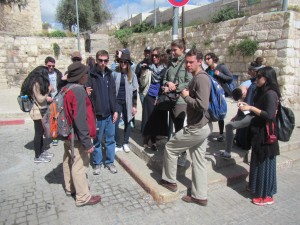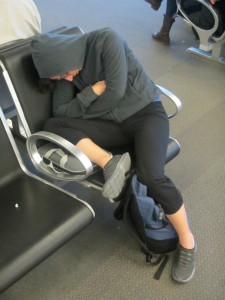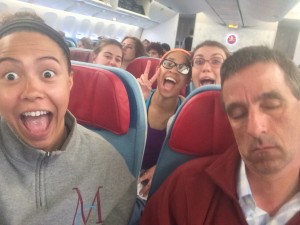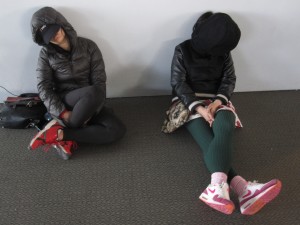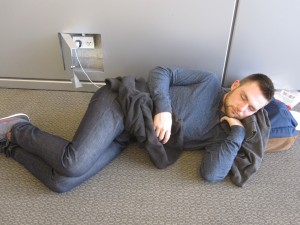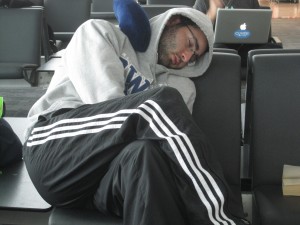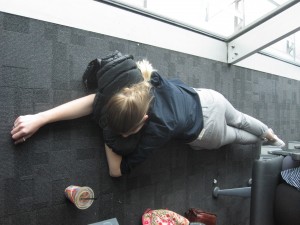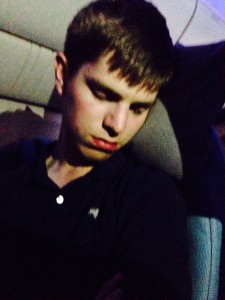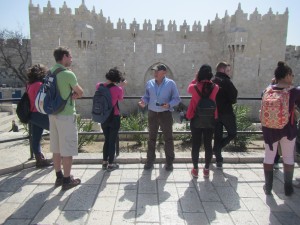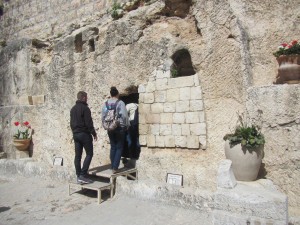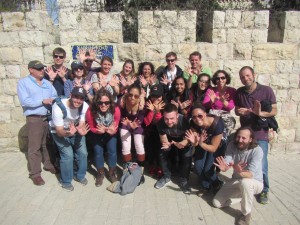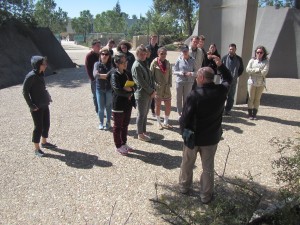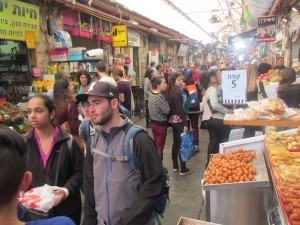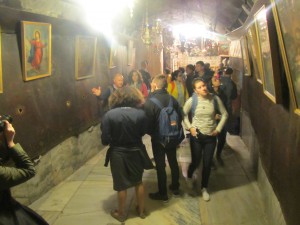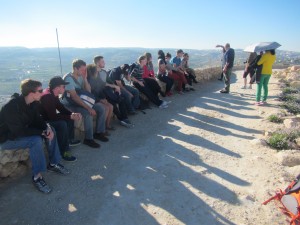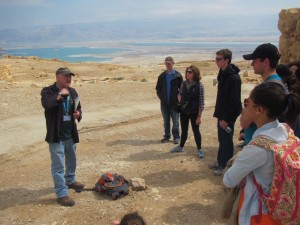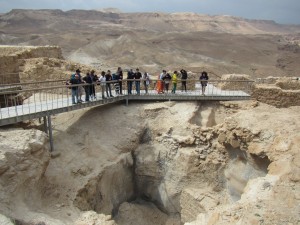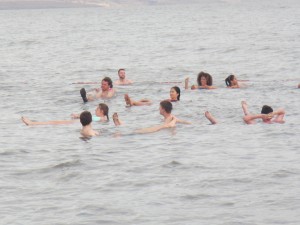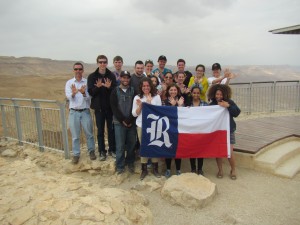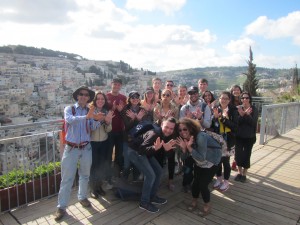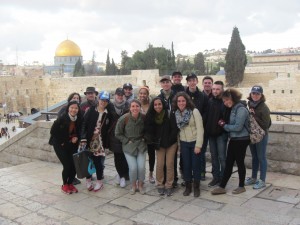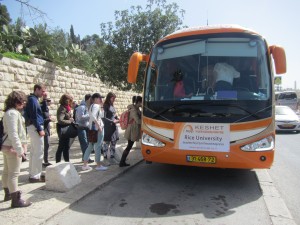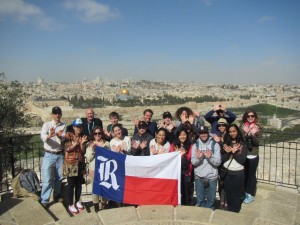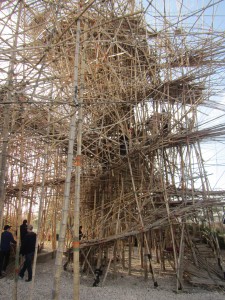 We began our day early today, leaving the hostel at 7:15 in the morning after grabbing a quick breakfast. Our early start was intended to beat the tourist rush at the security checkpoint at the base of the Haram al-Sharif, or Temple Mount, in Jerusalem’s Old City. There we met our guide for the site, an East Jerusalem native named Abed. Up on the plaza at the top of the mount, we were greeted with unexpected quiet and serenity amidst the hustle and bustle of the Old City below. Abed took us around the many sites of interest on the mount, including the Al-Aqsa mosque, the site of Mohammed’s night journey from Mecca, and the Noble Sanctuary, the iconic gold-domed shrine said to sit on the site of both the former Holy of Holies of the Temple and the place where Mohammed ascended to heaven. During our tour of the site we not only admired the spectacular buildings and scenery, but also learned a bit more about the pillars of Islam and its basic practices.
We began our day early today, leaving the hostel at 7:15 in the morning after grabbing a quick breakfast. Our early start was intended to beat the tourist rush at the security checkpoint at the base of the Haram al-Sharif, or Temple Mount, in Jerusalem’s Old City. There we met our guide for the site, an East Jerusalem native named Abed. Up on the plaza at the top of the mount, we were greeted with unexpected quiet and serenity amidst the hustle and bustle of the Old City below. Abed took us around the many sites of interest on the mount, including the Al-Aqsa mosque, the site of Mohammed’s night journey from Mecca, and the Noble Sanctuary, the iconic gold-domed shrine said to sit on the site of both the former Holy of Holies of the Temple and the place where Mohammed ascended to heaven. During our tour of the site we not only admired the spectacular buildings and scenery, but also learned a bit more about the pillars of Islam and its basic practices.
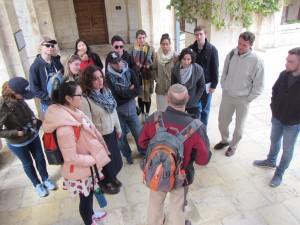 From the Haram we descended into the Muslim Quarter of the Old City, where we explored the narrow, winding streets and fragrant, busy markets. On the way, we paused to see a small section of the Western Wall now exposed in a residential neighborhood of the Muslim Quarter, known as HaKotel HaKatan, or the Little Wall. We stopped for a short break at the Austrian Hospice, where we were able to have a cup of coffee in their small, European-style café and catch some views of the surroundings from their balcony. Then it was on to the Crusader-era Church of Saint Ann, said to be the site of the Virgin Mary’s birth, where we were lucky to stumble upon a tour group of choristers showing off the spectacular acoustics of the church with their singing.
From the Haram we descended into the Muslim Quarter of the Old City, where we explored the narrow, winding streets and fragrant, busy markets. On the way, we paused to see a small section of the Western Wall now exposed in a residential neighborhood of the Muslim Quarter, known as HaKotel HaKatan, or the Little Wall. We stopped for a short break at the Austrian Hospice, where we were able to have a cup of coffee in their small, European-style café and catch some views of the surroundings from their balcony. Then it was on to the Crusader-era Church of Saint Ann, said to be the site of the Virgin Mary’s birth, where we were lucky to stumble upon a tour group of choristers showing off the spectacular acoustics of the church with their singing.
After a quick lunch in the courtyard of the church, we moved on to the Via Dolorosa with a new guide, the pastor of Christ Church, an Anglican church founded in 1840. It soon turned out that David, our Christian tour guide for the afternoon, was pretty much the opposite of Abed in the morning. Where Abed was knowledgeable, polite, and personal, David seemed distant, and his explanations did not help to clarify the stations of the cross for us. We ended up in the Church of the Holy Sepulcher, a delightfully chaotic church, filled with pilgrims and tourists. For many Christians, the Holy Sepulcher is the place where Jesus was crucified and buried.
After some free time we reassembled in the evening to welcome our evening guests to the hostel. The Parents Circle Families Forum is an organization of Palestinians and Israelis who have lost a member of their immediate families in the Israeli-Palestinian conflict (www.theparentscircle.org). Moira Jilani is a Palestinian woman who spoke movingly about the death of her husband who was shot by an Israeli soldier, and Rami Elchanan, an Israeli, talked about his 14-year old daughter who was killed in an attack by a suicide bomber. Both agreed that they derive their energy and passion for peace from their pain, and both asked us to take their mission of peace with us.
Tomorrow we will leave Jerusalem for the first time and spend the day at the Dead Sea, with stops at Qumran, the place of the Dead Sea Scrolls, Masada, the famous Herodian fortress, and Ein Gedi, where we hope to hop into the Dead Sea.
